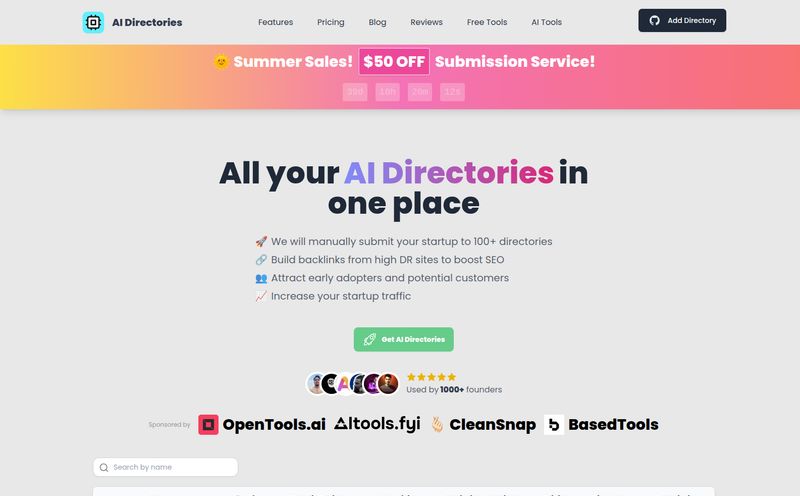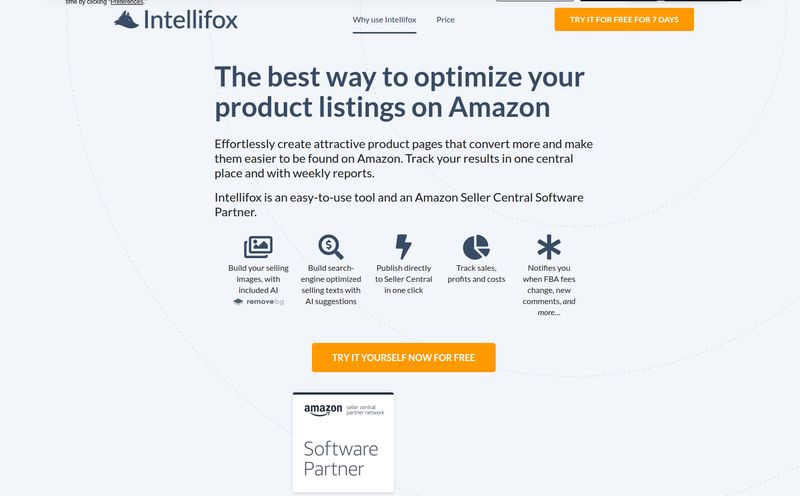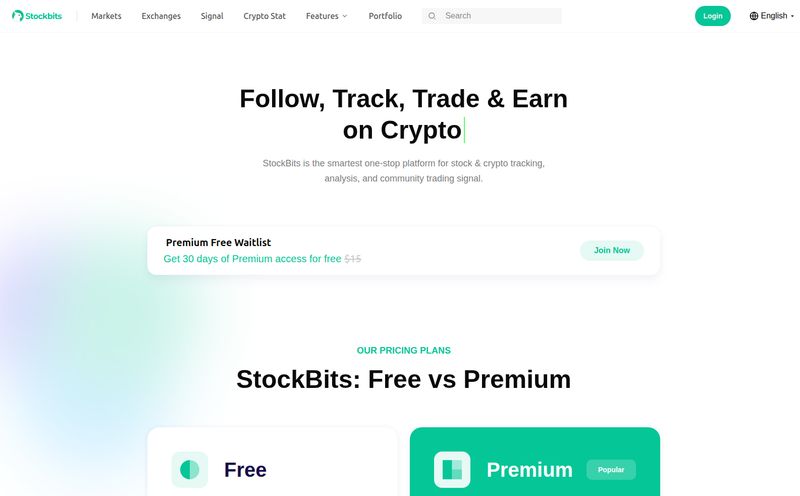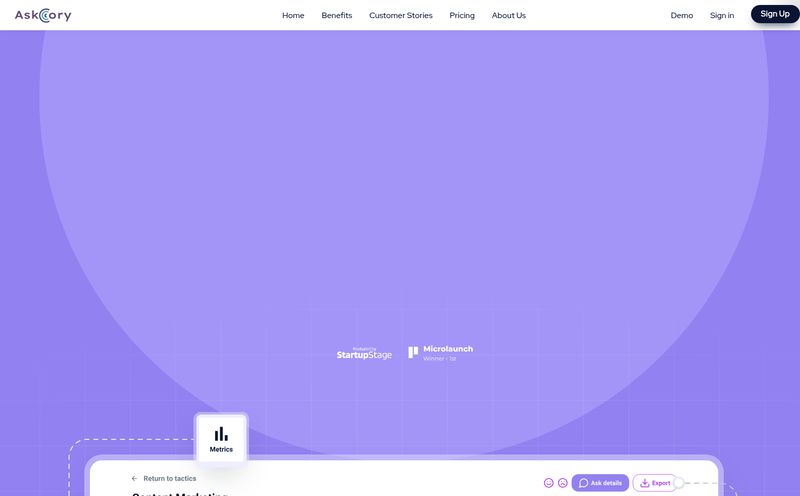Remember Those All-Nighters Doing Market Research? Yeah, Me Too.
I’ve got a confession. There’s a special kind of dread that used to hit me on a Sunday night. It wasn't about the upcoming week's meetings or the overflowing inbox. No, it was the ‘Big Market Research Project’ dread. You know the one. The project that promises to be the foundation of the next big marketing campaign but starts as a soul-crushing slog through a dozen analyst reports, ten competitor websites, and a spreadsheet with more tabs than a web browser in 2008.
We’ve all been there, right? Spending weeks trying to stitch together a coherent picture of the market, building buyer personas that feel more like fiction than fact, and delivering a SWOT analysis that feels… well, a bit generic. It's the necessary evil of our industry. Or at least, it was.
Lately, the AI-powered cavalry has been arriving, promising to save us from our spreadsheet-induced misery. And one of the shiniest new tools leading the charge is Osum. Their claim is audacious: cut research time from weeks to seconds. As a grizzled veteran of the SEO and marketing wars, my BS-meter immediately went on high alert. Seconds? Really? So, I decided to take it for a spin. Here’s what I found.
So What Exactly Is This Osum Thing Anyway?
At its core, Osum is an AI-powered market research platform. You feed it a product, a company, or a business idea, and it claims to spit out a comprehensive analysis almost instantly. We're talking detailed competitive research, SWOT breakdowns, buyer personas, growth opportunities—the whole shebang. It’s like having a team of hyper-caffeinated research analysts on standby, ready to go at a moment's notice.
The whole premise is built on contrasting the “Old Way” (slow, expensive, manual) with the “New Way” (Osum’s instant, AI-driven magic). And I have to admit, the promise is incredibly tempting.
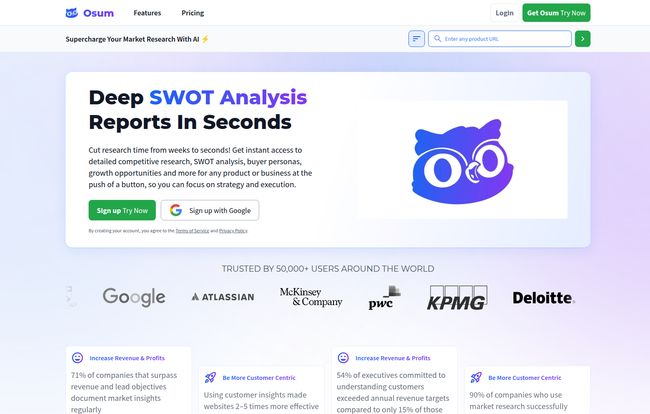
Visit Osum
It’s designed for pretty much anyone who needs to understand a market, from a freelancer trying to pitch a new client to a massive enterprise planning a global launch. The platform boasts trust from some seriously big names—Google, PwC, Deloitte—which definitely gives it a layer of credibility right out of the gate.
A Look Inside the Machine: The Features That Actually Matter
Okay, so it talks a good game. But what can it actually do? I jumped into the 7-day trial to see what’s under the hood. The dashboard is clean, and you can get started pretty much immediately, which I appreciate. No mandatory demo call with a sales rep? A blessing.
Instant SWOT Without the Awkward Whiteboard Session
My first stop was the SWOT Analysis. Traditionally, this is a 2-hour meeting with a bunch of stakeholders, a whiteboard, and a pack of smelly dry-erase markers. Osum does it in about 30 seconds. The results are surprisingly insightful. It pulls potential strengths, weaknesses, opportunities, and threats that are genuinely thought-provoking. It's not just boilerplate stuff; it feels tailored to the specific business you enter. A massive timesaver, for sure.
Finally, Buyer Personas That Don't Feel Made Up
If there’s one marketing task I loathe, it’s creating buyer personas from scratch. They often end up as a cringey collection of stock photos and stereotypes. Osum’s approach is different. It generates detailed personas with psychographics, sociotypes, and even a “day in the life” narrative. It’s a fantastic starting point that feels grounded in data, not just a marketer's imagination. You get insights into their work habits, what they value, and their pain points. It's a huge leap forward from 'Marketing Mary, 35, loves yoga and lattes'.
Finding the Gaps Where Your Competitors Aren't Looking
For me, as an SEO guy, this is where things get really interesting. Osum provides competitive opportunity analysis and content recommendations. It can help you understand your competitor’s positioning and identify those sweet spots in the market they’re ignoring. This is gold for content strategy. Instead of just throwing content at the wall and seeing what sticks, you can make informed decisions based on real market gaps. It even offers OKR suggestions for different departments, which is a nice touch to help align the whole company.
Let's Talk Money: The Osum Pricing Tiers
Alright, this is the part everyone secretly scrolls down to first. Osum isn’t a freemium tool, and its pricing reflects its positioning as a professional-grade platform. All plans are billed annually, but they sweeten the deal by giving you 3 months free, which is a pretty standard and welcome SaaS practice.
| Plan | Price (Billed Annually) | Best For |
|---|---|---|
| Pro | $119.99 /month | Freelancers and solo consultants who need to produce high-quality research quickly. |
| Expert | $199.99 /month | Startups and small teams who need deeper customer insights and market overviews. |
| Business | $399.99 /month | Agencies and established businesses that require growth opportunity insights and more collaboration. |
| Enterprise | $1,999.99 /month | Large organizations needing advanced admin controls, SSO, and invoicing. |
Is it expensive? That depends on your perspective. If you compare it to the cost of a single report from Gartner or Forrester, it's a bargain. If you compare it to the salary of a full-time market researcher, it's an absolute steal. The value isn’t just in the data, it's in the speed and the opportunities you can act on while your competitors are still scheduling their kickoff meeting.
The Good, The Bad, and The Big Question Mark
No tool is perfect, and Osum is no exception. It’s important to go in with your eyes wide open.
On the plus side, the speed is phenomenal. I can't overstate this. It collapses research timelines in a way that feels like science fiction. The breadth of analysis you get from a single search is also deeply impressive, covering everything from high-level market size to nitty-gritty customer psychographics.
However, there are a few things to be aware of. Some of the more advanced features, like Predictive Surveys, are still listed as “coming soon.” This is pretty typical for a fast-moving platform, but it’s something to note. You're buying into a platform that's still growing.
But here’s the big elephant in the room. The one thing that gave me pause.
If you want the detailed sources for the reports, it's part of a premium service that costs a whopping $17,500.
Let that sink in. For most of us—freelancers, agencies, even many mid-sized businesses—the AI-generated report is a black box. You have to trust that the AI has synthesized information from credible sources. For 95% of use cases, like building a marketing strategy or creating a client pitch, this is probably fine. The insights are the prize. But if you’re in academia, or in a high-stakes corporate environment where every single data point needs a citable source, this is a massive hurdle. It’s a trust-fall with the algorithm.
So, Who Is Osum Actually For?
After playing around with it and weighing the pros and cons, I think the ideal user profile is pretty clear.
- Freelancers and Consultants: The Pro plan is a game-changer. It lets you punch way above your weight class, delivering enterprise-level research to clients without the enterprise-level price tag.
- Startups and Small Teams: The Expert plan is perfect. When you're moving fast and need to validate ideas and understand your first customers deeply, this is your secret weapon.
- Agencies and Marketers: The Business plan is the sweet spot. It gives you the collaborative tools and growth insights needed to manage multiple clients or product lines effectively.
- Large Enterprises: The Enterprise plan is for the big guns who need the security and administrative features like SSO and audit logs, and for whom the $2k/month price tag is a rounding error.
Essentially, if your job relies on speed and agility, Osum is a powerful ally. If your job relies on painstaking academic-level citation, you might need to think twice or have a very large budget.
My Final Take: Is Osum Worth the Hype?
So, do I think Osum is the future of market research? In many ways, yes. It represents a fundamental shift in how we access and process business intelligence. The ability to ask a complex question about a market and get a coherent, detailed answer in seconds is something I would have killed for ten years ago.
It’s not a magic bullet that replaces human critical thinking. You still need to interpret the data, ask the right questions, and build the strategy. But Osum does all the heavy lifting—the grunt work that used to take up 80% of our time. It acts as an incredible accelerator, freeing you up to focus on what really matters: making smart decisions.
The source citation issue is significant, but I don't think it's a dealbreaker for most of the intended audience. For the sheer speed and quality of insights it provides, Osum is a tool that I believe is worth its weight in gold. If you're tired of the old way of doing things, I’d say giving the 7-day trial a shot is a no-brainer. It might just make you a believer.
Frequently Asked Questions
- How accurate is the data from Osum?
- Osum uses a sophisticated AI to aggregate and analyze data from a multitude of public and private sources. While the output is impressively accurate for strategic planning, users who require precise source citations for every data point should be aware of the high-cost premium service for that feature.
- Can I really use Osum for any industry?
- Yes. The platform is designed to be industry-agnostic. Whether you're in SaaS, e-commerce, healthcare, or professional services, you can input your business or product to get tailored market research and insights.
- How is Osum different from SEO tools like Semrush or Ahrefs?
- While SEO tools are focused on keyword research, backlink analysis, and technical site health, Osum is a pure market research tool. It focuses on broader market dynamics, customer behavior, competitive positioning, and growth opportunities, rather than just search engine performance.
- Is the 7-day trial completely free?
- Yes, the trial offers 7 days to explore real reports based on your own custom searches. It's a great way to evaluate the platform's capabilities with no commitment.
- Is the annual plan the only option?
- The pricing displayed prominently on their site is for annual billing, which includes a discount (3 months free). You should check their pricing page directly for any monthly options, which are typically more expensive per month.
- What happens to my reports after the trial ends?
- Typically with SaaS trials, you would need to subscribe to a paid plan to maintain access to the reports and data you generated. It's best to save or export any critical information before your trial period concludes.
Reference and Sources
- Osum Official Website: https://osum.com/
- Osum Pricing Page: https://osum.com/pricing
